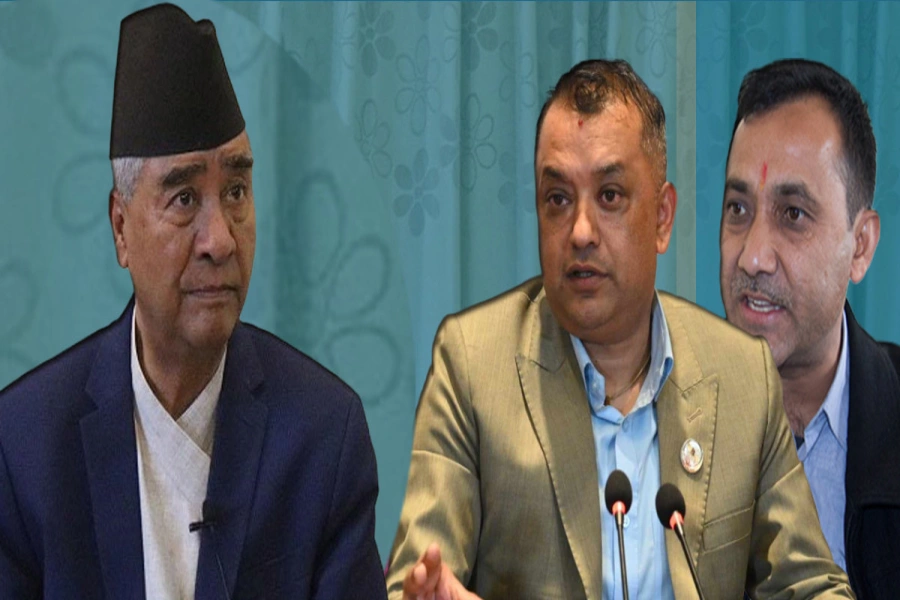It is as if the country has been waging total war on itself. Vital operational centers are malfunctioning because routine maintenance has been neglected and investment discouraged
MEXICO CITY – The world has witnessed many sharp economic declines over the years, but Venezuela’s is surely one of the worst to date. The country has experienced a loss of real (inflation-adjusted) GDP greater than that of most war-ravaged countries during World War II, and its inflation rate is expected to reach 10,000,000 percent this year. At well over 100 times the black-market rate, the official exchange rate depreciates so rapidly that a quote has lost its meaning by the time it is published.
Under these conditions, food—90 percent of which must be imported—is so scarce that the average Venezuelan is estimated to have lost 24 pounds (10.9 kilos); and an estimated three million Venezuelans (representing around 10 percent of the population) have fled. Power outages, water and medicine shortages, and near-famine have been persistent features of President Nicolás Maduro’s brutal and incompetent reign.
Until the 1960s, Venezuela’s per capita GDP was the highest in Latin America, at around 80 percent that of the United States. Today, it is under 30 percent, and also well below that of Chile, Brazil, Mexico, and Colombia. For comparison, in 1990, Colombia’s per capita GDP was about half that of Venezuela.
With the world’s largest oil reserves, Venezuela counts on hydrocarbons for over 90 percent of its export earnings. But its oil output has fallen from a peak of about 3.5 million barrels per day in the late 1990s to around 1.3 million in 2018, with production expected to decline to 700,000 in the next couple of years.
Infographics: Venezuela’s economic tragedy

In fact, even when the oil price has been rising, the country’s output has declined, owing to a lack of maintenance and investment, theft of material, Maduro’s appointment of inexperienced military allies as managers, and the outmigration of oil workers who can earn much more elsewhere. An oil worker at Petróleos de Venezuela, SA (PDVSA), the state-owned oil company, recently told the Wall Street Journal that he earns around $8.00 per month, adjusted for purchasing power parity.
Venezuela’s plight is largely self-inflicted. Despite rising oil prices, the Chavist regime allowed fiscal deficits to bulge to 24 percent of GDP in 2014. And since oil prices were still near their peak that year, those deficits have been financed by printing money, leading to accelerating inflation. Making matters worse, the government has imposed price controls so severe that retailers are required to sell their goods at a loss.
Beyond these clumsy attempts to regulate economic activity, the regime’s increasingly brutal crackdown on dissent and erosion of the country’s democratic institutions have made matters even worse. Under Maduro’s watch, basic services have ceased functioning. In 2016, government workers were told to show up for just two days per week, in order to conserve electricity; the country suffered mass power outages anyway.
In January, Maduro held his second inauguration, after winning a fraudulent presidential election last May. In response, many Latin American countries, along with Canada, the US, and some European Union member states, have recognized the speaker of the National Assembly, Juan Guaidó, as Venezuela’s legitimate president, in accordance with the country’s constitutional line of succession. In addition, the US, a major market for Venezuelan oil exports, has sanctioned the Maduro regime, frozen its bank accounts, and directed payments by US companies for Venezuelan oil into a new account that will be made available to Guaidó.
In the face of mass protests, Maduro has continued to resort to the intimidation, imprisonment, and starvation of opposition figures, while bribing military leaders for their support. Yet the question is not whether Maduro can hang on, but for how long. His regime cannot last indefinitely, and when it falls, Venezuela will have pressing needs.
For starters, the country will require humanitarian aid on a vast scale. Hospitals must be resupplied, schools reopened, and public transportation and other vital services restored. And food must be made available to a severely undernourished population.
At the same time, Venezuela will need reforms to end rampaging inflation, restore macroeconomic stability, and revive economic activity. It will also require financial support to import supplies and repair machinery and equipment. This applies not just to oil production, but to all economic sectors.
Rebuilding Venezuela will be a long process. In wartime, production tends to fall because the enemy disables key infrastructure such as railroad junctions and power-generation facilities. In Venezuela, it is as if the country has been waging total war on itself: vital operational centers are malfunctioning because routine maintenance has been neglected and investment discouraged for more than a decade.
The challenge, then, is to restore a stable macroeconomic environment and business climate while simultaneously improving the lot of Venezuelan citizens, so that they will continue to support political reforms. This would not be easy even in a country that has been far less ravaged than Venezuela. One hopes that Venezuela’s next leaders and the international community understand the nature of the challenge, and will take the steps needed to maintain social peace during the reconstruction. Venezuelans can finally see light at the end of the tunnel. But difficult days lie ahead.
Anne O Krueger, a former World Bank chief economist and former first deputy managing director of the International Monetary Fund, is Senior Research Professor of International Economics at the School of Advanced International Studies, Johns Hopkins University, and Senior Fellow at the Center for International Development, Stanford University
© 2019, Project Syndicate
www.project-syndicate.org






































